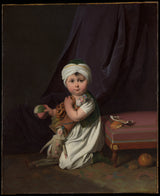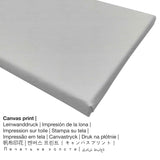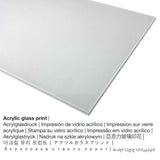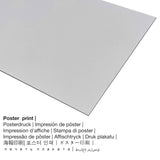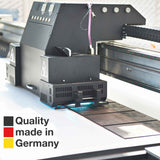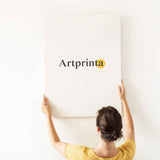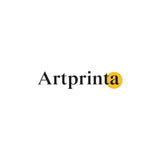Louis Léopold Boilly, 1805 - Eserese Nwa nwoke - mbipụta nka mara mma
Ụtụ gụnyere. Mbupu gbakọrọ na ndenye ọpụpụ.
Nkọwa zuru oke dị ka ihe ngosi nka nyere (© Nwebiisinka - The Metropolitan Museum of Art - Museumlọ ihe ngosi nka nke Obodo)
Dressed stylishly, in emulation of Mameluke warriors who came to Paris with Napoleon from Egypt after 1798, this puckish boy clutches his toys jealously—even as he holds out the possibility of a ball toss. The early history of the portrait remains unknown, as does the child’s identity, though the well-appointed interior and overall effect of playful indulgence point to aristocratic origins. The canvas is considerably larger than the estimated 4,500 bust-length portraits that Boilly produced.
Iberibe ozi nka
| Aha nka: | "Ihe osise nke nwa nwoke" |
| nhazi ọkwa: | sere |
| Otu izugbe: | nkà nke oge a |
| oge: | 19th narị afọ |
| Afọ okike: | 1805 |
| Afọ nka: | karịa afọ 210 |
| Agba na: | mmanụ na kwaaji |
| Nha izizi (ọrụ nka): | 28 7/16 × 23 3/8 na (72,3 × 59,4 cm) |
| Egosiputara na: | Museumlọ ihe ngosi nka nke Obodo |
| Ebe ebe ngosi nka: | New York City, New York, Njikota Obodo Amerika |
| Weebụsaịtị nke ihe ngosi nka: | Museumlọ ihe ngosi nka nke Obodo |
| License: | ngalaba ọha |
| Site n'aka: | The Metropolitan Museum of Art, New York, Onyinye Eugene V. na Clare E. Thaw Charitable Trust, 2019 |
| kreditline ọrụ nka: | Onyinye nke Eugene V. na Clare E. Thaw Charitable Trust, 2019 |
Banyere omenka
| Ihe nkiri: | Louis Léopold Boilly |
| okike nke onye nka: | nwoke |
| Nationality: | French |
| Ọrụ: | onye na-ese ihe |
| Mba onye si: | France |
| nhazi ọkwa: | omenkà nke oge a |
| styles: | Ihunanya |
| Nwụrụ na afọ nke: | 84 afọ |
| Afọ ọmụmụ: | 1761 |
| Afọ ọnwụ: | 1845 |
Banyere ihe a
| Ụdị edemede: | ezi nka mmeputakwa |
| Mmeputakwa: | dijitalụ mmeputakwa |
| Usoro nhazi: | Mbipụta UV / dijitalụ |
| Production: | emere na Germany |
| Stockdị ngwaahịa: | mmepụta ihe na-achọ |
| Ngwaahịa were: | gallery ebipụta nka, imewe ụlọ |
| Nhazi nka nka: | nhazi ihe osise |
| Njikwa oyiyi: | 1: 1.2 - ogologo: obosara |
| Ntụgharị nkọwa akụkụ: | ogologo bụ 20% mkpụmkpụ karịa obosara |
| Nhọrọ ihe dị: | Mbipụta iko acrylic (nwere ezigbo mkpuchi iko), mbipụta ọla (aluminium dibond), mbipụta akwa akwa, mbipụta akwụkwọ mmado (akwụkwọ kwaaji) |
| Mbipụta kanvas (akwa akwa n'elu etiti ihe ndọtị) ụdị nha dị iche iche: | 50x60cm - 20x24", 100x120cm - 39x47", 150x180cm - 59x71" |
| Mpempe iko acrylic (nwere ezigbo mkpuchi iko) nha: | 50x60cm - 20x24", 100x120cm - 39x47", 150x180cm - 59x71" |
| Mbipụta akwụkwọ mmado (akwụkwọ kwaaji): | 50x60cm - 20x24", 100x120cm - 39x47" |
| Mbipụta nke aluminom (ihe aluminom): | 50x60cm - 20x24", 100x120cm - 39x47" |
| Igwe onyonyo: | adịghị |
Ngwa ngwaahịa ndị ahịa anyị nwere ike isi na ya were
Nchịkọta nhọrọ ngwaahịa na-enye gị ohere ịhọrọ ihe na nha ọkacha mmasị gị. Ka ị kwekọọ n'ihe ị chọrọ nke ọma, ị nwere ike họrọ n'ime nhọrọ nhazi ngwaahịa ndị a:
- Mbipụta kanvas: The canvas print, not to be confused with a canvas painting, is a digital copy printed onto cotton canvas. It produces the sculptural impression of three dimensionality. Furthermore, a canvas generates a nice, pleasant effect. How do I hang a canvas print on my wall? Canvas prints are relatively low in weight, meaning that it is easy to hang your Canvas print without the help of additional wall-mounts. That is why, a canvas print is suitable for all kinds of walls.
- Mbipụta nke aluminom: Aluminium Dibond prints are prints on metal with an outstanding depth, which makes a contemporary look throuch a non-reflective surface structure. The Aluminium Dibond Print is the excellent introduction to the sophisticated world of fine art replicas made with aluminum. Colors are luminous in the highest definition, fine details appear clear and crisp.
- Poster (akwa akwa akwa): The poster print is a UV printed canvas with a granular surface structure. The printed poster is excellently suited for placing the art copy in a personal frame. Please bear in mind, that depending on the size of the poster print we add a white margin of something between 2-6 cm around the artwork in order to facilitate the framing with a custom frame.
- Glass acrylic e biri ebi (nwere ezigbo mkpuchi iko): An acrylic glass print, often denoted as a an art print on plexiglass, makes an original into wonderful wall décor and is a viable alternative option to dibond or canvas art prints. Your favorite artwork is manufactured with state-of-the-art UV direct printing technology. The effect of this are vibrant and sharp colors. The great advantage of an acrylic glass fine art print is that contrasts as well as small image details will be more recognizeable thanks to the granular gradation of the print. The acrylic glass protects your custom art print against light and external influences for between 40-60 years.
a nkà nke oge a mpempe nka na aha Eserese nke Nwa nwoke kere site na onye ihunanya master Louis Léopold Boilly in 1805. E ji nha ya see nke mbụ ya: 28 7/16 × 23 3/8 na (72,3 × 59,4 cm) and was painted with the techinque oil on canvas. The work of art is in the the Ụlọ ihe ngosi nka nke Metropolitan collection. With courtesy of - The Metropolitan Museum of Art, New York, Gift of the Eugene V. and Clare E. Thaw Charitable Trust, 2019 (license - public domain). The creditline of the artwork is: Gift of the Eugene V. and Clare E. Thaw Charitable Trust, 2019. On top of that, alignment is Eserese ma nwee oke nke 1: 1.2, which implies that the length is 20% shorter than the width. The painter Louis Léopold Boilly was an artist from France, whose style can primarily be classified as Romanticism. The Romanticist painter lived for a total of 84 afọ, amuru na afo 1761 ma nwụọ n’afọ 1845.
Nkwupụta iwu: We try whatever we can in order to depict our products in as much detail as possible and to showcase them visually on the product detail pages. Although, the colors of the print materials and the print result may differ marginally from the representation on the device's screen. Depending on your settings of your screen and the condition of the surface, not all color pigments are printed as exactly as the digital version depicted here. Considering that all the art reproductions are printed and processed by hand, there might as well be slight variations in the exact position and the size of the motif.
© Nchekwa ikike nwebisiinka, www.artprinta.com (Artprinta)

